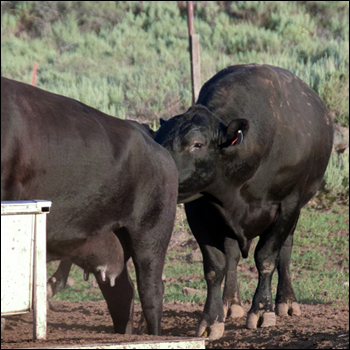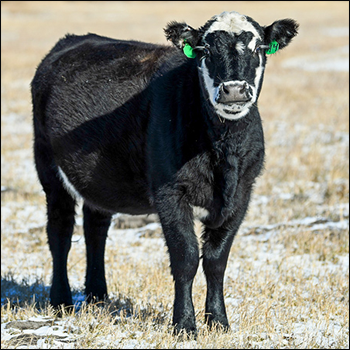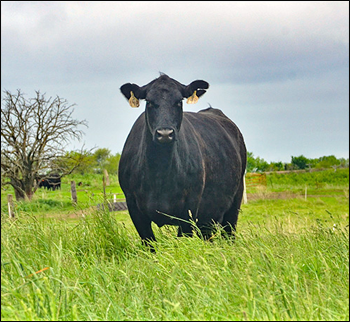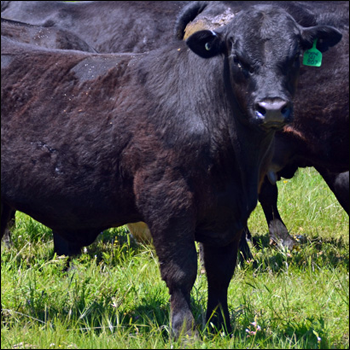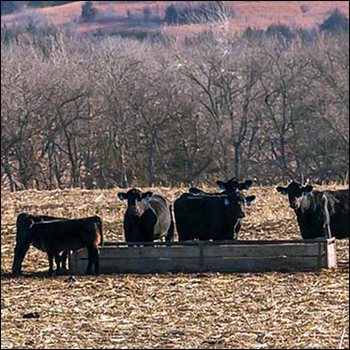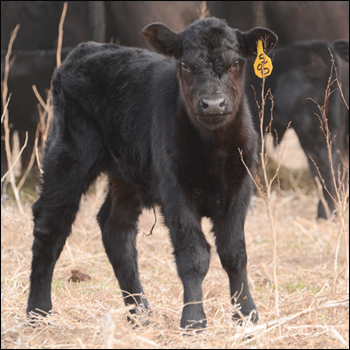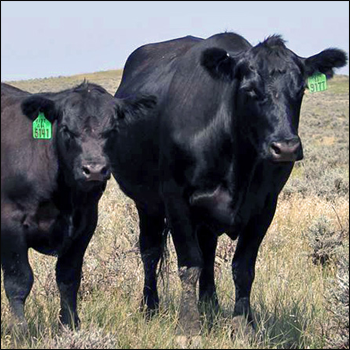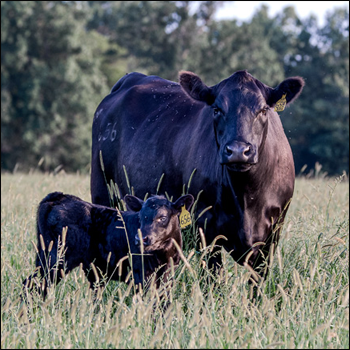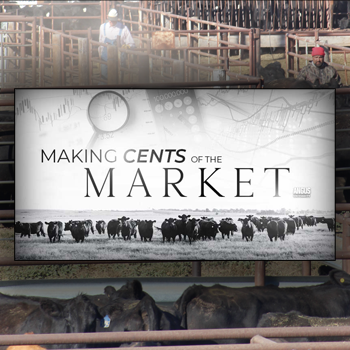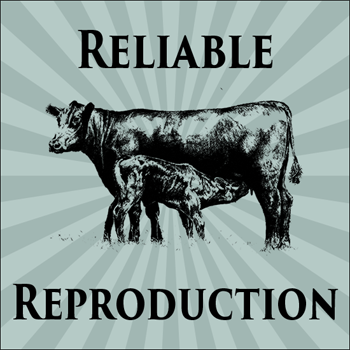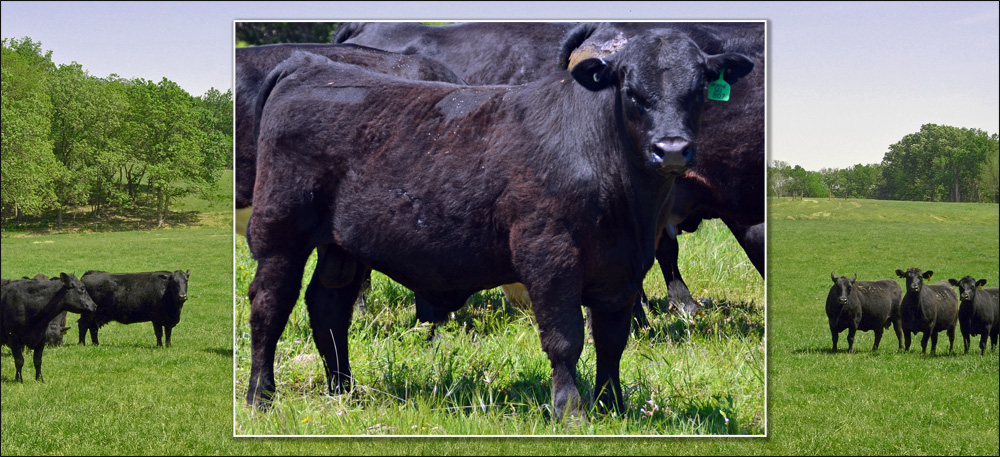
Transitioning Bulls From Feeding to Breeding
Give bulls the appropriate transition before it’s go time.
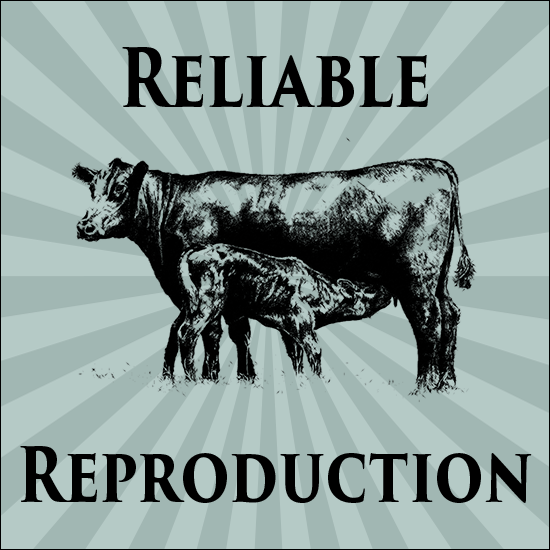
A bull’s first breeding season is quite an adjustment. Many bulls are raised in different environments than in what they’ll be expected to perform. After weaning they are confined and fed concentrate feeds. Some have gone through bull test programs to measure rate of gain and feed efficiency, and they may be overly fat. Most stockmen know overly fat is unhealthy for a bull, but still tend to buy the biggest, best-looking animals. Many breeders keep overfeeding young bulls because it’s harder to sell a bull that wasn’t pushed for faster gain.
Overly fat bulls need to be “let down” slowly, and some don’t make the transition very well if they’ve been pushed for fast growth. They may have too much fat in the scrotum, which affects fertility, and may not hold up if they have permanent damage to feet. Even bulls that have been developed on growing rations usually carry more flesh than bulls raised on grass or wintered on hay. It’s a major adjustment for any overly conditioned bull when turned out with cows. Some young bulls can’t handle the sudden increase in exercise and decrease in nutrition. They fall apart quickly.
Jennifer Pearson, assistant professor of production animal health at the University of Calgary, says producers can influence the development of young bulls by selecting those that reach puberty more quickly and by providing proper nutrition. Overfeeding after weaning is counterproductive for fertility. It just makes it harder for those bulls to adjust to a breeding pasture situation.
“Feeding too much starch after weaning can lead to growth defects, not only in hoof structure (from laminitis), but also skeletal growth. It’s similar to overfeeding young horses that grow too fast and have developmental orthopedic disease, with weak areas in bones and joints. We can also cause this in bulls. Young bulls pushed for fast growth can develop OCD lesions,” she says, referring to pockets of weaker bone/cartilage that may lead to breakdown in the joints.
This can make them susceptible to injuries later when traveling, fighting and breeding cows. These bulls are more susceptible to leg and joint injuries.
Too much starch also leads to extra fat in the scrotum.
“This insulates the testes, keeping them too warm for optimal sperm production, and they end up with sperm abnormalities,” she says.
Pearson refers to research by John Kastelic, head of the Department of Production Animal Health at the University of Calgary’s College of Veterinary Medicine, in which he put diapers around bulls’ scrotums to insulate them like the fat would do. The results showed the detrimental effects on fertility.
Bulls should be fed their nutritional requirements, but not above those levels. Being too fat or too thin can impair their ability to travel and breed cows, Pearson says. If they are too thin, they won’t have the energy and reserves to handle the work. They won’t have the energy and nutrients to produce sperm, they won’t be able to settle as many cows, and they won’t have the endurance to travel to find the cows.
It’s also a hard adjustment for a bull that’s been confined and well-fed to suddenly go out and work. Like an out-of-shape human, it takes time to become an athlete and do physical work.
For bulls to get in shape, they need to be walking around. If they are confined and then we turn them out, they have a harder time handling physical demands and tend to lose weight dramatically, she says. Some people address this with bigger bull pens, so bulls get more exercise and have more distance to walk between feed and water.
Feed should be transitioned, as well, so it won’t be an abrupt change when they go to pasture.
“If we switch feed too abruptly, it’s a big change for the rumen,” Pearson says. “If young bulls were on grain, rumen microbes need to adjust to digesting and fermenting grass rather than digesting grain. If we don’t give them a chance to make a gradual change, they may get sick or develop diarrhea because their digestive tract didn’t have a chance to adjust.”
A bull is a big investment, so give them the transition time to do their job well.
Editor’s note: Heather Smith Thomas is a cattlewoman and freelance writer from Salmon, Idaho. Photo by Kasey Brown.

Angus Proud
In this Angus Proud series, Editorial Intern Jessica Wesson provides insights into how producers across the country use Angus genetics in their respective environments.
 Angus Proud: Scott Sproul
Angus Proud: Scott Sproul
Oklahoma operation learned wisdom of moving calving season to better suit their marketing needs.
 Angus Proud: Bubba Crosby
Angus Proud: Bubba Crosby
Fall-calving Georgia herd uses quality and co-ops to market calves.
 Angus Proud: Jim Moore
Angus Proud: Jim Moore
Arkansas operation retains ownership through feeding and values carcass data.
 Angus Proud: Les Shaw
Angus Proud: Les Shaw
South Dakota operation manages winter with preparation and bull selection.
 Angus Proud: Jeremy Stevens
Angus Proud: Jeremy Stevens
Nebraska operation is self-sufficient for feedstuffs despite sandy soil.
 Angus Proud: Dave Rutan
Angus Proud: Dave Rutan
Angus breeder gets the most out of his bull investment by partnering with opposite calving-season operation.
